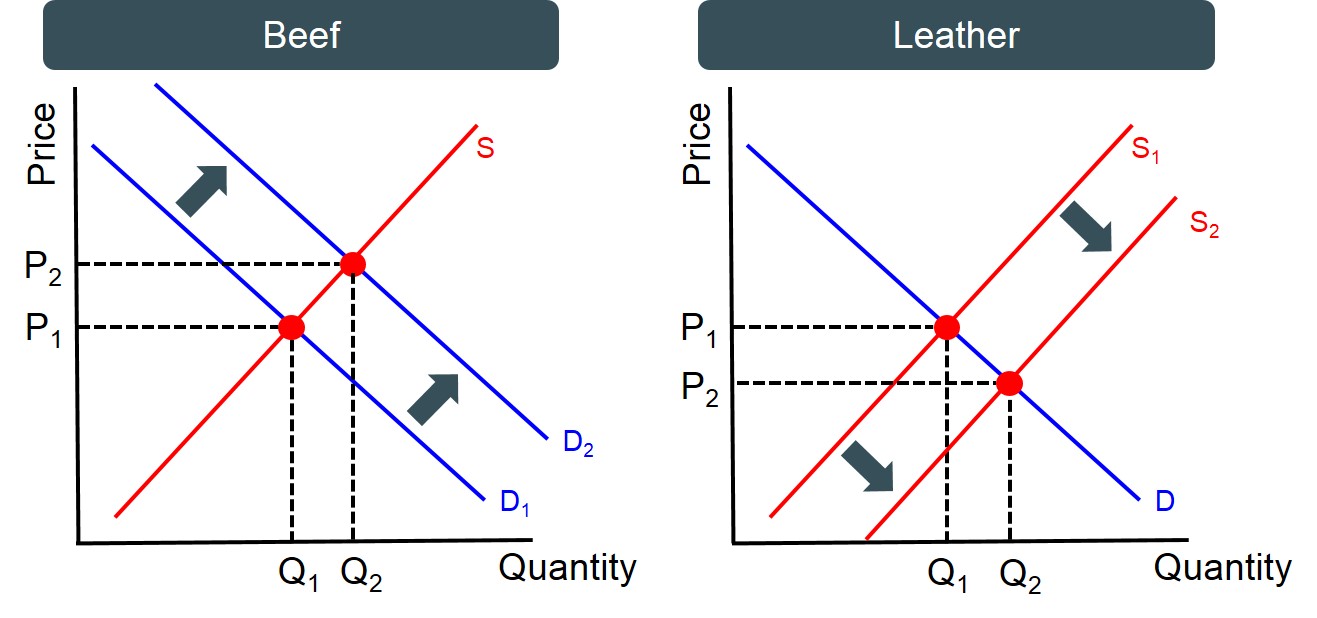When a good is supplied as result of the supply of another good, typically because a number of goods can be produced from the same raw materials/process or if remnants from the production process can be used to produce something else.
Below is a set of diagrams to illustrate joint supply in a demand and supply framework. In this instance an increase in demand for beef, raises the price of beef and as a result increases the supply if beef due to higher profit incentives. If more beef is produced then this should increase the supply of leather as leather is produced from beef. Therefore beef and leather are in joint supply.
